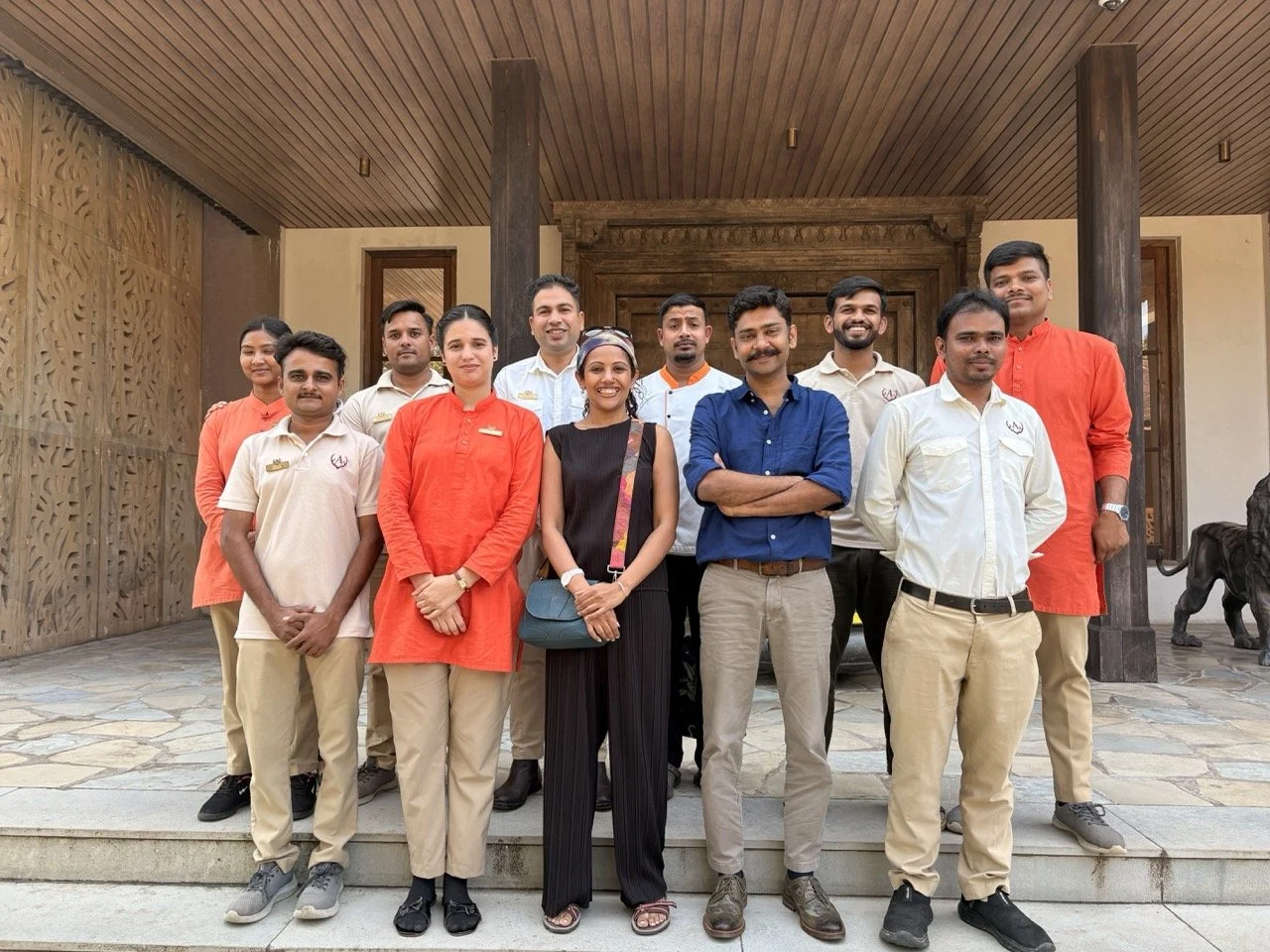How Tech is Elevating Event Engagement and Personalization in 2025
/There was a time when corporate events meant ballroom banquets, basic AV, and a barely-there app with a PDF agenda. Not anymore. In 2025, technology isn’t just supporting events—it’s transforming them. As shared by Shivam Mishra, Senior Events Manager at SKIL, these insights reflect firsthand experience from the field.
For those of us who’ve spent the better part of two decades in this space, the shift has been seismic. And for event managers in India, especially those planning large-format MICE events, sales kick-offs, leadership summits, or incentive travel programs, tech is no longer a 'nice-to-have' — it’s core to the experience.
Let’s unpack how:
1. Hyper-Personalised Journeys through AI & Data
Gone are the days of sending one-size-fits-all agendas. Today, AI tools curate bespoke experiences for each delegate. From recommending breakout sessions based on past interests to adjusting F&B choices as per dietary history, events are becoming deeply personal.
Take, for instance, a financial services leadership offsite in Jaipur we executed last year. Delegates received personalised event apps showing tailored agendas, room assignments, table seating based on networking preferences, and push notifications for content most relevant to their roles.
2. Frictionless Mobility and Check-ins
Integrated travel tech now ensures seamless airport-to-ballroom journeys. Smart itineraries, automated flight updates, in-app check-ins, and facial-recognition-based entry eliminate queues and confusion. SKIL Events recently deployed this for a 1,200-pax incentive movement across Vietnam, with under 5% dependency on physical helpdesks. The feedback? "Best-handled logistics we’ve seen."
3. AR, VR & Mixed Reality for Deeper Immersion
Today’s delegates don’t just want to watch—they want to feel. VR booths for factory simulations, AR-enhanced product demos, or immersive brand tunnels using projection mapping are helping brands tell stories like never before.
One of our clients, a leading manufacturing major, wanted to showcase their new plant design at a global distributors' meet. Instead of a 2D walkthrough, we created a VR experience of the future facility. The result? Decision-makers spent nearly 3x longer at the experience zone than at any other booth.
4. Real-Time Engagement Tools
Polling, sentiment tracking, heat maps of delegate movement, gamified feedback – we now have the tools to read the room in real time. This means content can be tweaked on the go, breakout sessions moved, or even food preferences updated instantly.
We once swapped out an underperforming speaker slot with a popular unscheduled fireside chat just by tracking live engagement and app analytics. The audience never knew—but the energy in the room said it all.
5. Tech-Driven On-Ground Engagement Installations
Interactive walls, kinetic LED structures, motion-sensor installations, and AI-powered brand games are redefining physical engagement. These aren’t just decorative elements – they are experience amplifiers.
At a recent annual partner meet, we designed a dynamic LED tunnel that responded to delegate movement and transformed brand values into light and motion. It became the most photographed spot at the venue and drove organic social shares far beyond expectations.
6. Post-Event Memory Making
Event tech doesn’t switch off after the final applause. Auto-generated aftermovies, personalised photo timelines, session recordings, one-click networking follow-ups – all ensure the event lives far beyond the closing act. These aren’t vanity metrics; they’re brand memory triggers.
For one international bank’s India roadshow, we created custom AI-edited highlight reels for each city within 24 hours, pushing them through their internal comms. Result? 30% higher post-event recall in their leadership feedback survey.
Final Thought
Technology isn’t replacing the human element in events – it’s enhancing it. In an age where attention spans are short and expectations are sky-high, integrating tech meaningfully can make the difference between a forgettable gathering and an unforgettable experience.
At SKIL Events, we don’t chase trends. We build tailored engagement ecosystems that blend creativity, logistics, and technology to bring every brief to life – with precision, emotion, and impact.
Because in the end, it’s not just about what people saw. It’s about what they felt. And what they took back with them.
Author’s Profile
Shivam Mishra is a passionate and performance-driven events professional with over 8 years of experience in curating unforgettable experiences across India’s dynamic events landscape. An MBA in Events Management, Shivam specializes in end-to-end event execution—from creative ideation and planning to flawless on-ground delivery. His core strength lies in turning a client’s vision into a tangible, impactful experience, with a strong emphasis on customer delight and innovation.
Currently serving as Senior Event Manager at SKIL Events, Shivam leads high-impact corporate events, conferences, and product launches, combining creative thinking with operational expertise. His work reflects a deep understanding of emerging trends, client psychology, and brand strategy. Prior to this, he has held key roles with industry leaders like Delve-Serwiz, IBFW Hospitality, and Mustang Events, handling everything from luxury weddings to B2B conferences, often under high-pressure environments.





































